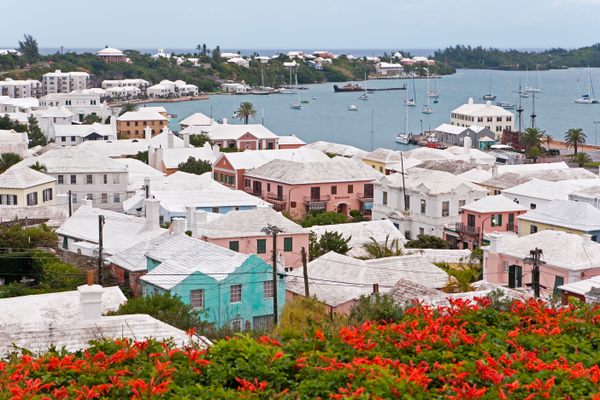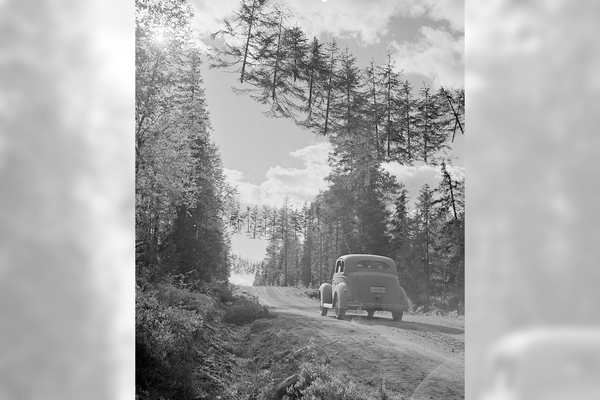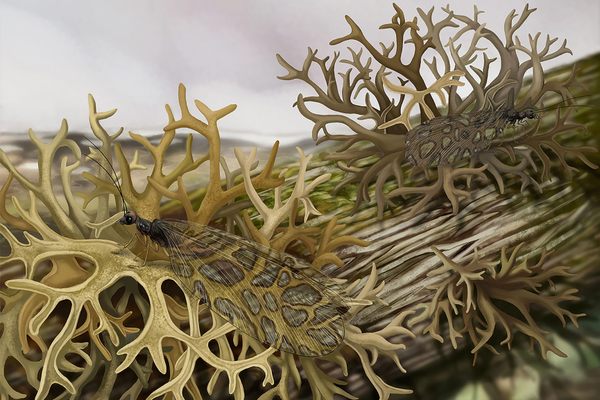
10 Optical Illusion Destinations
You have to see it to believe it—or not.
Welcome to Where to Wander, our selection of the best under-the-radar destinations in 2025. To see more surprising sites around the world that have fewer tourists and more locals, check out all of Atlas Obscura’s favorite places to travel this year.
Do mine eyes deceive me? In the 10 optical illusions below, the answer is a resounding yes. Several of these sites have been visited by curious onlookers for centuries, as they try to get to the bottom of their fantastical phenomena. From naturally occurring tricks to deceptions intentionally constructed for aesthetic pleasure or even war, the world appears to be full of places that are more than meets the eye.

Yangzhou Zhongshuge, China
Booklovers won’t believe their eyes when they step into this bookstore and library in Yangzhou, China, as the mirrored floor and arched shelves create the illusion of a never-ending tunnel of books. Constructed in 2016, the zigzag design at the apex of the ceiling imitates the nearby wending Yangtze River, which, when reflected in the mirrored floors, intends to draw customers deeper into the store. The architect was inspired by the relationship between the city’s many arched bridges and the river, as guiding factors in local culture and commerce.
Floating Trees, Finland
In 1941, photojournalist Osvald Hedenström captured on film a resourceful optical illusion in service of war: camouflage by trees that appear to float. During World War II, Finland simultaneously resisted and worked with Nazi Germany to stave off the Soviet Russian invasion from their eastern border. Poor in arms but wealthy in trees, the Finnish army used forestry to camouflage all sorts of assets, from coastal defense ships to planes at the airport. Along the road to Raate, the tactic served to obscure the view of a Russian watchtower about six miles away. Planes flying overhead could still see the road, while cars below partook in a surreal sight of trees that seemed to levitate in the air. But from the vantage point of the watchtower, the forest appeared uninterrupted.
Magnetic Hill, Australia
Magnetic hills mystify visitors the world over, through their disorienting orientation, which cause the apparition of vehicles rolling uphill. The magnetic hill in Pekina, Australia, amplifies this illusion with a large magnet statue at the “top” of the hill, which allegedly pulls cars placed in neutral uphill. In reality, this optical illusion is caused by a surrounding landscape that causes a slight downhill slope to appear uphill. The roadside sign claims plastic and aluminum cars will roll downhill, and steel cars will roll up. The best way to test it out is by driving there yourself.

Underwater Waterfall, Mauritius
Underwater volcanic activity formed the Mascarene Islands, about 700 miles east of Madagascar, around 8 million years ago. The sands of this geological hotspot will continue shifting until the islands disappear back into the Indian Ocean. The largest of these isles, Réunion Island, contains one of the most active volcanoes in the world. Off the coast of Mauritius, the second-largest island, there appears to be an underwater waterfall. The horseshoe-shaped, 13,000-foot plunge creates the illusion of water streaming down to the ocean depths, but it’s really the erosion of sand, moved by water currents.
Tunnel of Love, Ukraine
Relatively unknown outside of Ukraine until 2011, this nearly two-mile natural train tunnel is carved out of a densely wooded stretch of trees. Tourists flock here for lush photoshoots, and local legend has it that couples who visit the tunnel will be granted a wish, as long as they’re sincere. The trees were planted during the 1940s to create a camouflage screen for the train tracks during the Cold War. Trains still run infrequently through the tunnel, transporting birch wood to the plywood factory and plywood out to Western Europe, but train conductors are mindful of pedestrians.

Upside-Down House of Trassenheide, Germany
This blue Cape Cod–style house on the island of Usedom in Germany has all the trappings of a seaside holiday home: garden benches, gravel drive, wheelbarrow, and a bicycle parked out front. There’s just one major exception: It’s upside down. Constructed in 2008 by a pair of Polish architects, the tourist attraction welcomes visitors to consider life from an inverted perspective. Upon entering through the attic, you appear to be walking on the ceiling as you explore the impeccably furnished interior of the house, which is also built on a 6 percent incline to leave visitors feeling a little topsy-turvy as they emerge back into the world of the rightside up.
Oregon Vortex, United States
Located in the heart of gold country, the Oregon Vortex has created a rush of its own. Today owned and operated by the Cooper family, the area is said to be affected by a “spherical field of force,” a powerful magnetism akin to a vortex, which makes balls roll uphill, brooms stand on end, and people appear to change height in front of your very eyes. The most prominent feature of the property is a former mining company office that slid downhill, known as the “House of Mystery,” which has a drastic slant that exacerbates the area’s already skewed optics. Theories abound on what causes the distortions in perception, and its mention in an episode of “The X-Files” has contributed to its paranormal lore.
Rakotzbrücke Devil’s Bridge, Germany
Viewed from certain angles, when conditions are right, the Rakotzbrücke Devil’s Bridge forms a perfect circle with its reflection in the water, creating the illusion of a portal into another world. Medieval Europeans believed in many “devil’s bridges,” structures so dangerously or delicately constructed that people commonly said they must have been built by Satan in exchange for the soul of the first person to cross it. The Rakotzbrücke Devil’s Bridge was commissioned by a local knight in 1860, and today no one is allowed to cross it. But that precaution is out of concern for the bridge’s and visitors’ physical—rather than spiritual—safety.

Uyuni Salt Flat, Bolivia
The Uyuni Salt Flat in Bolivia is a marvel at any time of year, but it turns into a mind-boggling optical illusion from November till April during the wet season, when its 6,835 square miles become an uninterrupted reflecting pool for the sky. When the largest salt flat in the world transforms into a shallow salt lake, it is still traversable by boat and truck, attracting visitors to its mirror-world landscape. Adding to the otherworldliness of this place, the salt flats are breeding grounds for three species of flamingos in early November, and the most abundant vegetation appears in the form of giant cacti.
Santa Cruz Mystery Spot, United States
Tucked in a 150-foot circle amidst the redwood trees in California, the Mystery Spot has been perplexing visitors since it was opened to the public in 1940. Here, it appears the rules of gravity and physics don’t apply; the area is marketed as a “gravitational anomaly,” where even the trees don’t grow perpendicular to the ground. Even just looking at pictures of people standing at unnatural angles can make some viewers feel woozy. While some speculate about alien influence on the area, the true trickery lies within our own minds, which are deceived by the abnormal horizontal and vertical lines.














Follow us on Twitter to get the latest on the world's hidden wonders.
Like us on Facebook to get the latest on the world's hidden wonders.
Follow us on Twitter Like us on Facebook